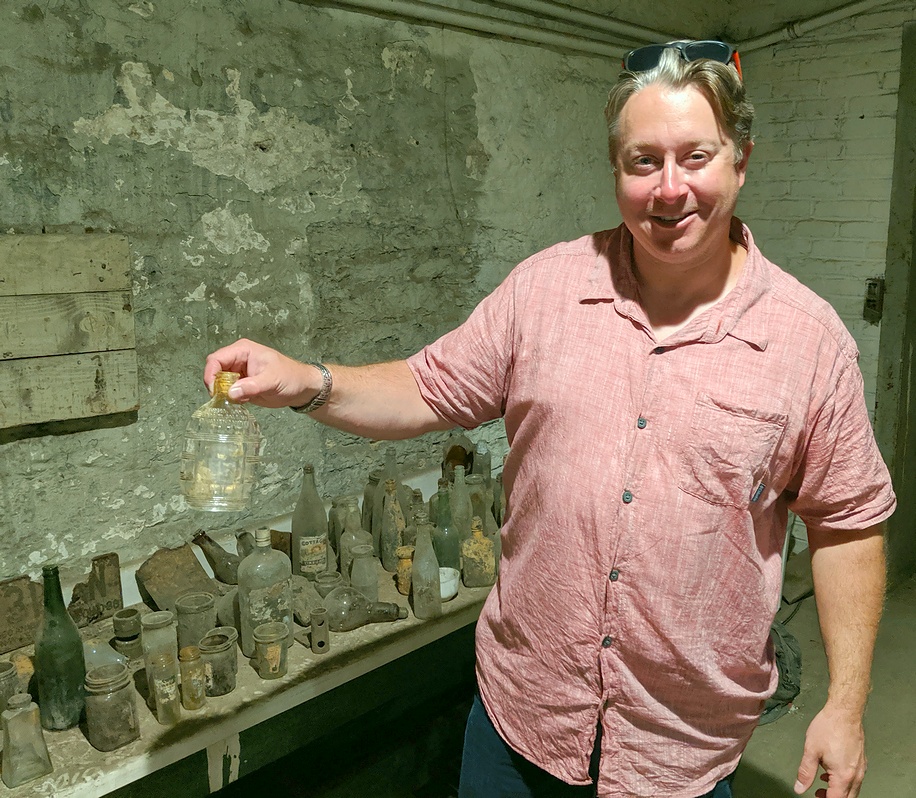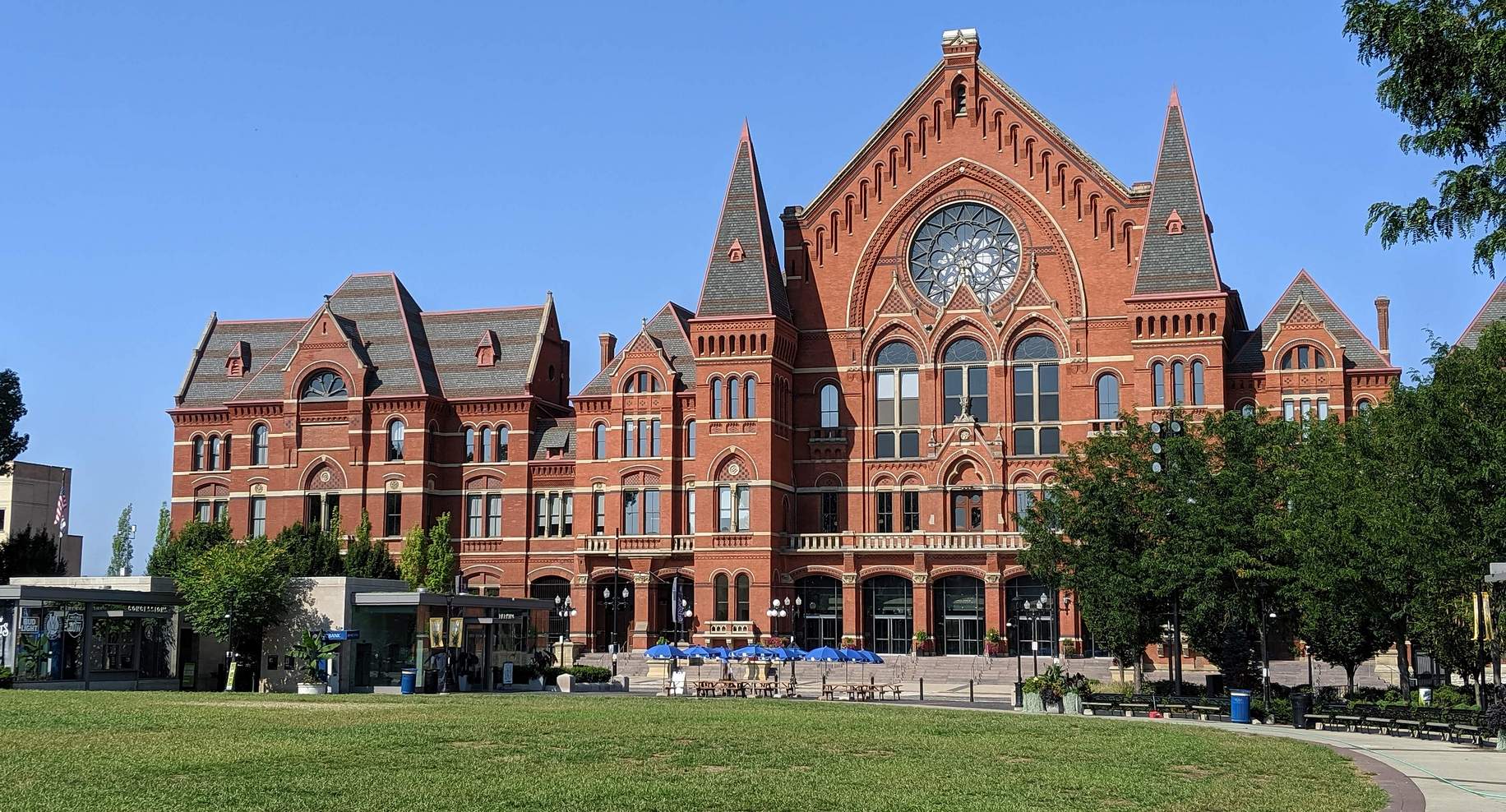Most city walking tours barely scratch the surface of local history. But, as the name suggests, the Queen City Underground Tour in Cincinnati digs deeper.
 Guide Craig Maness of American Legacy Tours (1332 Vine St., Cincinnati; 859-951-8560; americanlegacytours.com) led us on a 2-hour trek across and eventually beneath Over-the-Rhine (OTR) as he related the neighborhood’s history. That’s him at right with ancient bottles discovered in underground OTR.
Guide Craig Maness of American Legacy Tours (1332 Vine St., Cincinnati; 859-951-8560; americanlegacytours.com) led us on a 2-hour trek across and eventually beneath Over-the-Rhine (OTR) as he related the neighborhood’s history. That’s him at right with ancient bottles discovered in underground OTR.
OTR was heavily settled by two waves of German immigrants who arrived in the 1830s and again in the 1850s. The Miami-Erie canal, which separated the district from the rest of the city, was locally nicknamed “the Rhine.” Cincinnatians searching for beer, pretzels, and bratwurst could find them by going “over the Rhine.” The canal was buried long ago, the OTR nickname persists. With 943 buildings over 360 acres, it’s now the largest intact historic district in the country.
But it’s not all about the past. OTR is something of a phoenix. Around 2010, Maness told us, the population was less than 3,000. It’s now more than 9,000 and growing quickly. We wonder if the tour narrative has to change every time it goes out. Construction is underway everywhere and “for sale” and “for rent” signs are outnumbered only by “sold” signs. We have to think that the resurgence of OTR and the explosion of interest in craft brewing is something more than a coincidence.
Heady times in Cincinnati’s brewing past
In the pre-Prohibition heyday of 1890, Cincinnati had at least three dozen active breweries and 1,841 registered drinking establishments. While Americans then drank an average 16 gallons of beer per year, the burghers of Cincinnati consumed 40 gallons. A lot of those drinkers inhabited OTR, which boasted 136 bars and saloons and several breweries, including John Kauffman. The establishment moved to 1622 Vine Street in 1860, making 1,000 barrels of beer per year.
The company expanded below ground, eventually taking three years to hollow out its underground complex. By 1871, it produced 25,000 barrels per year. Production eventually peaked in 1894 with 70,000 barrels per year. The 1919 imposition of Prohibition put Kauffman out of business.
Taking the deep dive into the barrel rooms
 The high point of the tour for us (or low point, depending on how you look at it) was the journey into the cellars of the John Kauffman brewery building at 1622 Vine Street. A set of winding, steep stairs led to the subterranean cellars where they both brewed and lagered their barrels. The photo at right shows the massive lagering room. After 100 years, not even a whiff of hops remains.
The high point of the tour for us (or low point, depending on how you look at it) was the journey into the cellars of the John Kauffman brewery building at 1622 Vine Street. A set of winding, steep stairs led to the subterranean cellars where they both brewed and lagered their barrels. The photo at right shows the massive lagering room. After 100 years, not even a whiff of hops remains.
Kauffman was hardly the only underground complex. Tunnels were discovered under Findlay Market in May 2016. The tunnels at the Kauffman structure were gradually rediscovered in the 1990s and they are the only ones open for touring.
Cincinnati once again has a lively brewing scene, with craft breweries and taprooms opening all the time. Even Boston brewing stalwart, Samuel Adams, has moved its main brewing to Cincinnati and has a popular taproom—albeit well outside OTR. The walking tour ends—appropriately enough—at Taft’s Ale House (1429 Race St., Cincinnati; 513-334-1393; taftsalehouse.com), located in the handsome 1850 brick St. Paul’s church. Even if you’re not on the tour, stop in for a glass of Gustav (Viennese style lager), a Cherrywood Amber (American red ale), or a Gavel Banger IPA.

